No Green Space In Your Town? Kerala Man Grows 400-Tree Forest in 3 Cents of Land!
Once an arid rock-strewn patch, the land now teems with lush green creepers, shrubs and trees - all thanks to a 53-year-old man who believed that forests could grow in cities too!
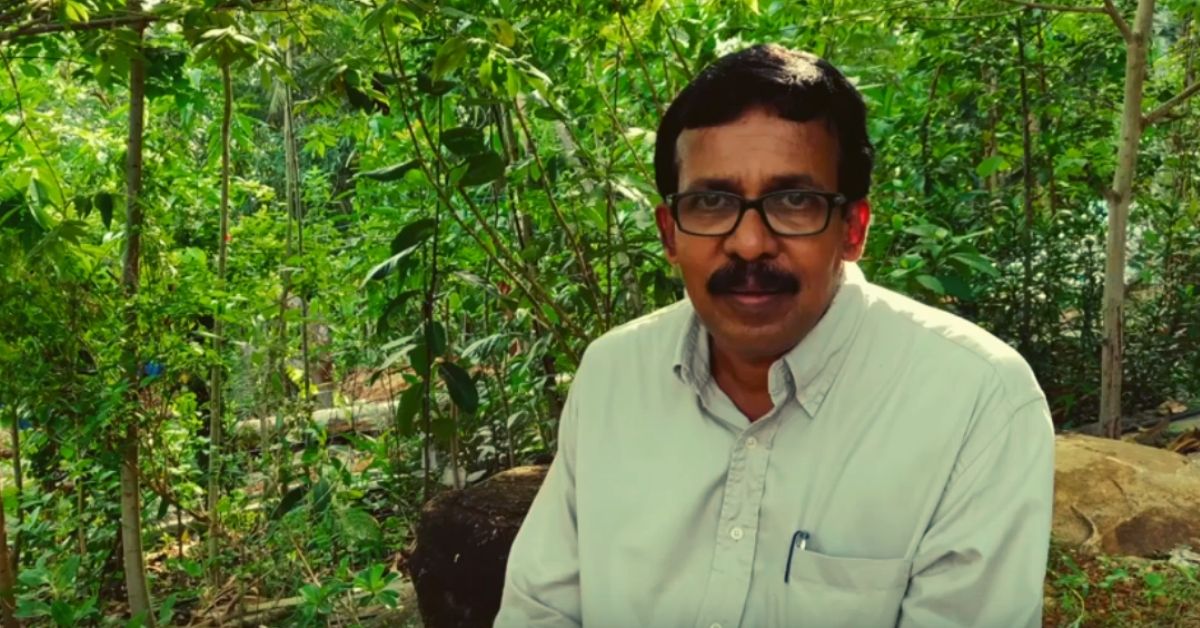
Some of the reasons why Kerala is synonymous with greenery are the many festivals, folklore and rituals that are closely related to nature. Growing up in the state means spending most of the time amidst lush greenery and the paddy fields.
For M R Hari, it was no different. There were several varieties of medicinal, flowering and fruiting trees in his ancestral house in Kottayam town.
One of my most cherished childhood memories is playing around the trees and chewing on medicinal leaves every time there was a health problem. Numerous birds would chirp and often the temple elephants would also visit as we had palm trees. We also used to grow seasonal trees like cashew nuts, jackfruits and tamarind,” Hari, Managing Director of Invis Multimedia, tells The Better India (TBI).
Hari was taught about the importance of trees from a young age. Besides learning about the environmental benefits and medicinal properties of trees, Hari was also informed about their cultural significance.
As a part of our sharing culture, we do not visit anyone’s house empty-handed. In my house, it was a ritual that we always take some produce from our trees when visiting anyone’s house, he adds.
When he moved to Thiruvananthapuram after education in the 90s, he witnessed a steady decline in green cover due to concretisation. He even joined city-based social groups fighting for the environment.

However, it was not until the recent past that Hari took it upon himself to contribute.
Finding an atmosphere present in the forest in urban spaces is next to impossible, and my ancestral property is no more. Well-versed with environmental problems, I started planting saplings on my property in Puliyarakonam (13 km from Thiruvananthapuram), he says.
Planting trees proved to be an uphill task for Hari as the land was not fertile and there was a shortage of water, “Thrice my vegetation has been destroyed due to the physical condition of the land.”
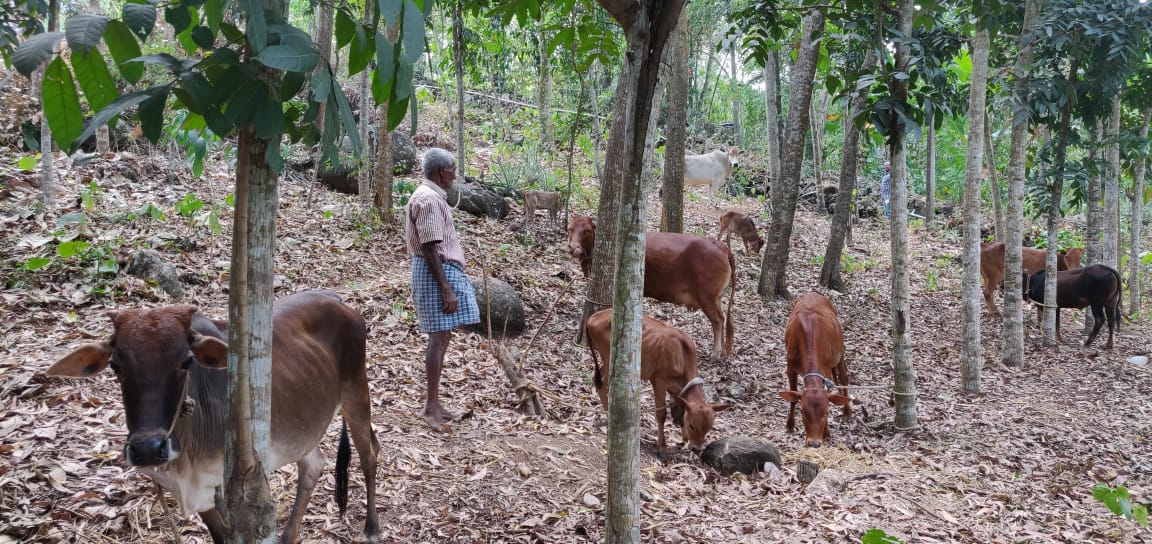
Hari purchased around 12 indigenous cows to make his 2-acre-land fertile and improve the soil quality. Dried cow dung and a mixture of coir pith helped.
Miyawaki Forest
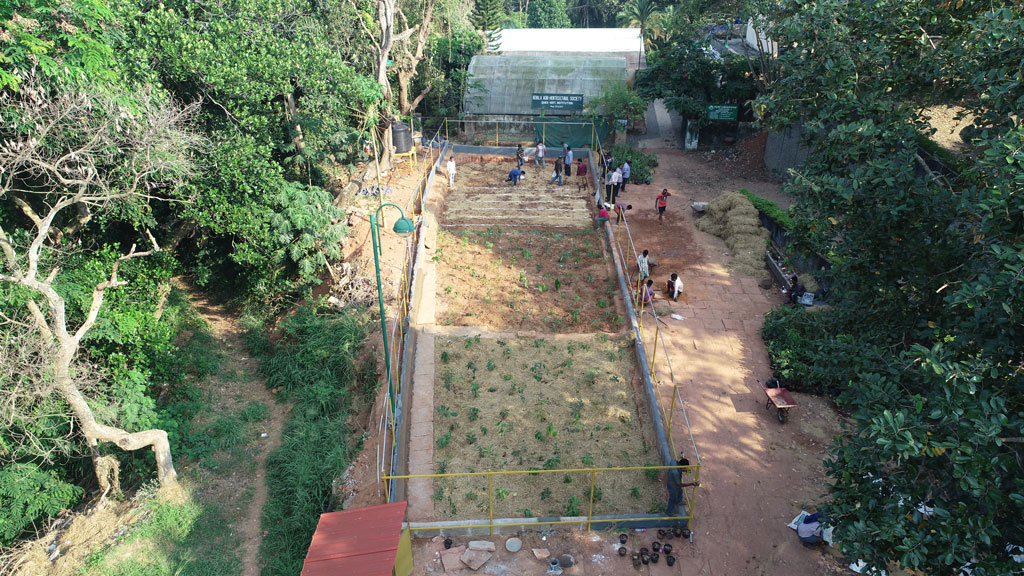
During his research on trees, Hari stumbled upon the Miyawaki Afforestation, a planting method developed by the Japanese botanist Akira Miyawaki.
Miyawaki method of tree plantation helps grow saplings ten times faster, and the forest is 30 times more dense than a natural one. The saplings are planted very close to each other to prevent sunlight from reaching the ground and keeping the soil moist. The plants grow vertically instead of horizontally.
These trees also absorb carbon dioxide 30 times more and have better dust reduction ability. They can make the surface area 30 times greener, as compared to a monoculture plantation.

With guidance from a botanist, Hari planted 400 saplings comprising flowers, fruits, vegetables and medicinal herbs in three cents of his land. (One cent is equal to an area of 1/100 of an acre, or approximately 435.60 square feet)
In the last one and a half years, the height of the plants in his forest has increased to 15 feet, which is home to more than 35 insect varieties!
Since the area is dry, Hari started Rain Water Harvesting and groundwater recharge to save, store and reuse the water. He has stored around two million litres of water so far.
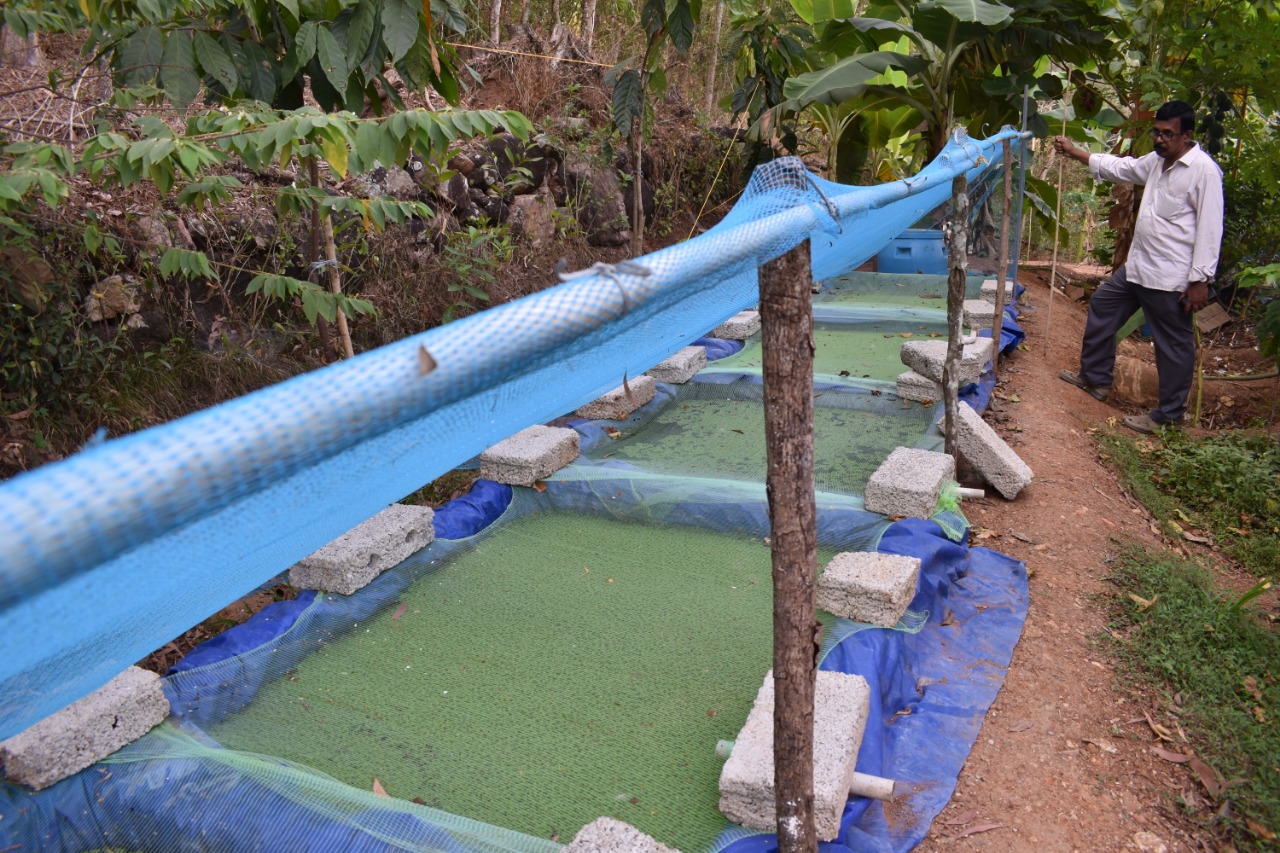
Maintenance is needed only in the first three years, “It will take a couple of years before the forest becomes dense and self-sufficient. Fruits, vegetables and branches are taken out regularly. On holidays, my office staff often volunteers for this activity,” says Hari.
The land that was once an arid dry patch now boasts of green creepers, climbers, shrubs, sub-trees, and trees.
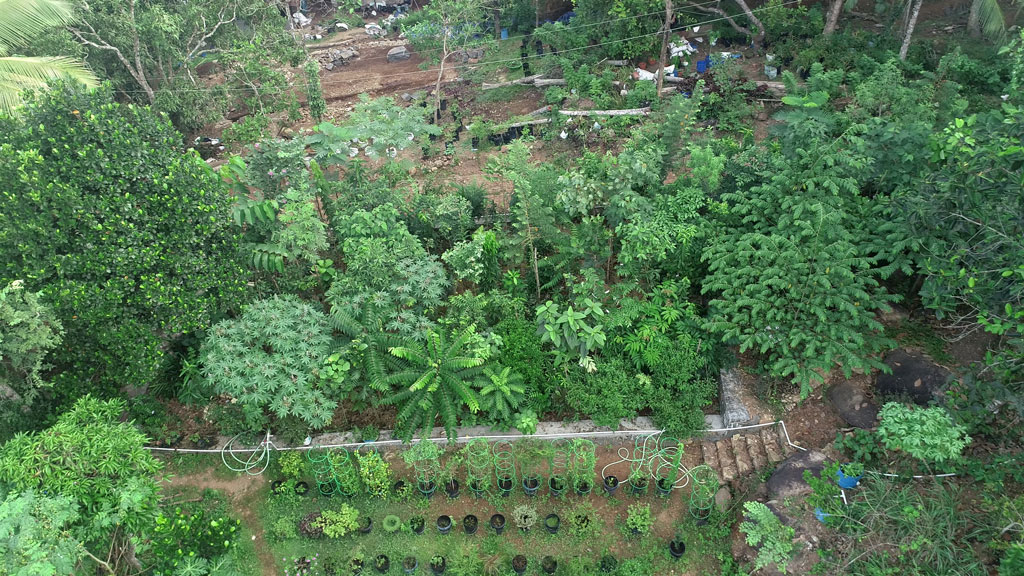
Some of the traditional medicinal plants include aadalodakam (Malabar nut) changalamperanda (Adament creeper), ambazham (Indian Hog Plum), neermathalam (Garlic Pear Tree), amruthavalli (Heart-leaved Moonseed), and thaani (Bedda Nut Tree).
Seeing Hari’s success, the state government invited him to grow a forest in Kanakakkunnu Palace Grounds. In collaboration with Nature’s Green Guardians Foundation, he built a Miyawaki forest comprising around 800 saplings on five cents of land at the Grounds. The six-month-old forest has over 60 plant species.
He is also building similar forests in Peyad and Munnar. On one patch of his land in Puliyarakonam, he recently planted 400 new saplings on four cents, “I plan to turn this plot into a dense forest. In the next ten years, my forest will be as dense as a 100-year-old one,” he says.
He is roping like-minded people in the activity to spread awareness and help learn this technique.
Hari has also inspired the locals to practice Miyawaki method of afforestation, which led to around 50 people practising this technique directly or indirectly.
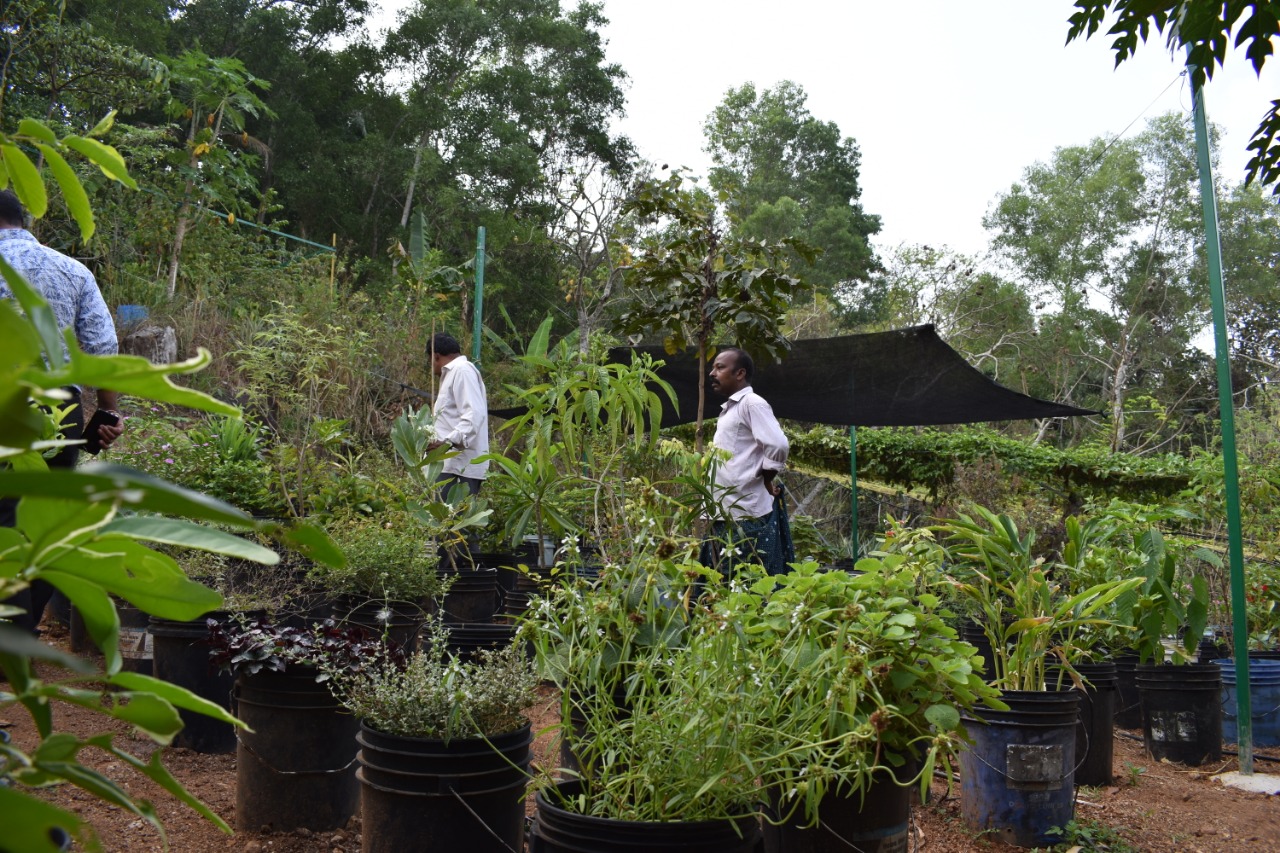
In Kerala, people usually buy 5-6 cents of land to construct a house. I always suggest sparing two cents to grow a Miyawaki forest. With trees covering the house, the air quality will be pure. Carbon footprints can be reduced by using less air conditioning as the house will always remain cool, adds the 53-year-old.
As per Hari, the growth rate of trees will escalate only if the saplings are planted very close to each other in the beginning. In the second year, the trees would become thick, leaving no room for new saplings.
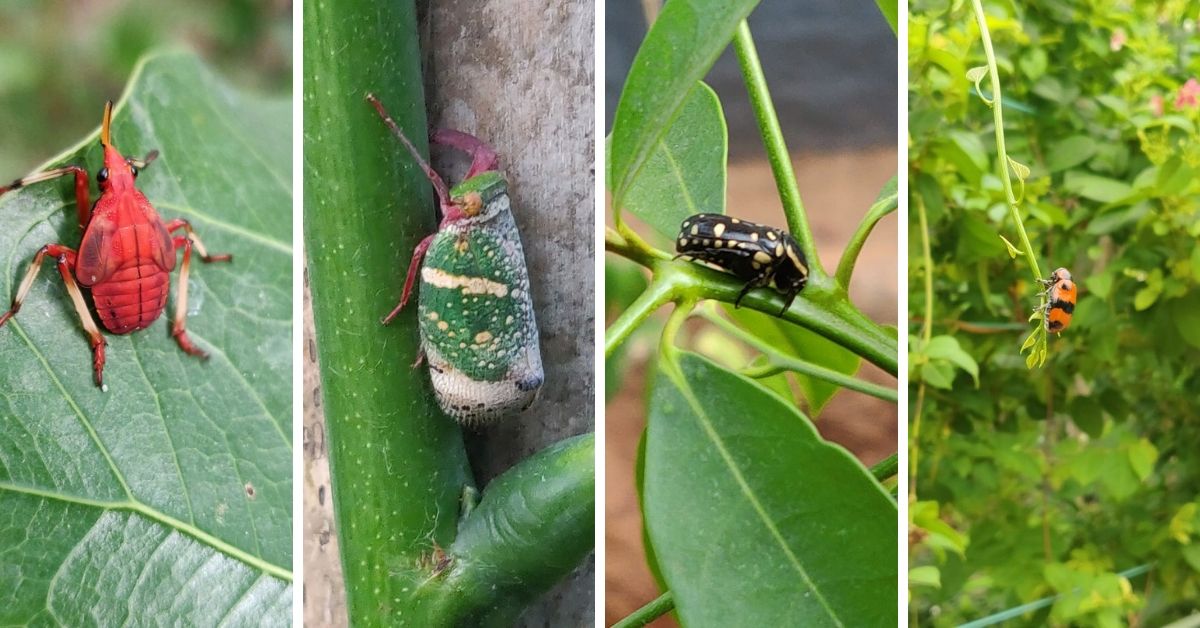
For successfully planting more than 3,000 plants in the last one year, Hari credits his family, especially his 87-year-old mother, “My interest in plants stems from her. Until recently, she used to plant trees at her home. Her ardent love for greenery is the reason why I am environmentally conscious.”
Hari has again tied up with the state government, and in their upcoming project, close to 12,000 trees will be planted in public spaces.
Also Read: This 58-YO Bengaluru Man Wanted to Live in a Forest. So He Grew One in His Backyard!
Featured Image Source: YouTube
(Edited by Saiqua Sultan)
Like this story? Or have something to share?
Write to us: [email protected]
Connect with us on Facebook and Twitter.
If you found our stories insightful, informative, or even just enjoyable, we invite you to consider making a voluntary payment to support the work we do at The Better India. Your contribution helps us continue producing quality content that educates, inspires, and drives positive change.
Choose one of the payment options below for your contribution-
By paying for the stories you value, you directly contribute to sustaining our efforts focused on making a difference in the world. Together, let's ensure that impactful stories continue to be told and shared, enriching lives and communities alike.
Thank you for your support. Here are some frequently asked questions you might find helpful to know why you are contributing?


This story made me
-
97
-
121
-
89
-
167














